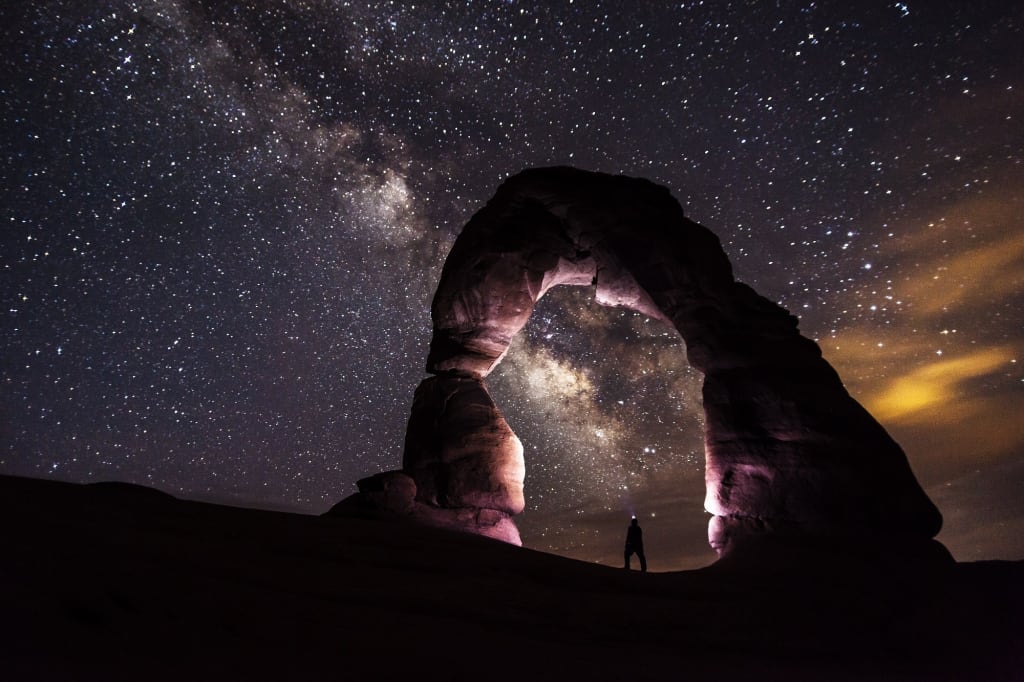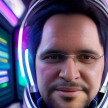What is the source of the 'nothing'?
From which our universe originated?

The genesis of our universe remains one of the most puzzling enigmas of all time. But what about the enigma that comes before it? What existed prior to the beginning of our universe? Despite the tireless efforts of scientists to unravel the mysteries of our universe's origins, the answer to this question remains elusive. However, we can explore the current theories and hypotheses that have been put forth by the scientific community thus far.
The 20th century brought a newfound understanding of the cosmos, largely thanks to the pioneering work of Edwin Hubble. Atop Mount Wilson in Southern California, Hubble turned his telescope skyward and discovered that the seemingly haphazard clouds of gas floating about were actually distinct galaxies, and there were countless more of them than anyone had ever imagined. But he also uncovered something even more groundbreaking - these galaxies were in motion, which could only mean one thing: the universe was expanding. This revelation was a game-changer, as it strongly suggested that the universe must have had a starting point.
Reversing time would reveal the origin of the universe, but it took many years for scientists to formulate a comprehensive explanation - the Big Bang Theory. According to this theory, neither time nor space existed before the beginning, meaning there was no "where" or "when." However, there was one crucial component - the Cosmic singularity. This state of the universe was incredibly compact, with a high density and temperature. If the universe were compressed into a small ball, the pressure and heat would be astronomical. Eventually, the universe could no longer withstand the immense pressure and heat, leading to the explosive event known as the Big Bang.
The Big Bang unleashed a tremendous burst of energy and matter, birthing everything that we know today: the fabric of time and space, the fundamental physical forces, and even tiny particles called quarks. These quarks were dispersed throughout the universe in an intensely hot Cosmic broth. As the universe cooled, gravity began to pull these quarks together, eventually forming atoms, molecules, and the first celestial bodies - stars. All of this unfolded over a span of 12 to 14 billion years.
Alan Harvey Guth and the Inflation Theory
Now that we understand how our universe came into existence, the question remains - what existed before that? Alan Harvey Guth, a prominent American theoretical physicist and cosmologist, has dedicated his life to unraveling this enigma. Despite the insights provided by the Big Bang Theory, Guth has identified some flaws in its premise. For instance, the distribution of matter in the universe appears more uniform than it should be, given the conditions that existed in the early universe.
To better understand how the universe developed, imagine hanging a paint-filled balloon from the ceiling and placing a white canvas on the floor. If the balloon pops and spills its contents, the result would be complete chaos - a series of random spots spread unevenly across the canvas. However, this does not accurately depict the universe's formation. Instead, picture a small, red dot drawn on the canvas, which gradually expands as we capture it on film frame by frame. This circular growth in all directions is a more accurate representation of reality.
Guth's breakthrough discovery was that the early universe was surprisingly uniform and proportional, which led to the development of the inflation theory. According to this theory, a powerful force accelerated the universe before the Big Bang, instantaneously distributing matter and energy throughout space in a homogeneous manner. The inflation theory has been widely accepted by the scientific community as an explanation for the universe's birth. For many scientists, this idea is a satisfactory explanation for the formation of the universe.
Alternative Theories of the Universe's Birth
While the inflation theory is widely accepted, not all scientists agree with it. Martin Bojowald, a German physics professor, proposes an alternative theory for the universe's birth. Bojowald argues that the singularity, the infinitely dense and hot state of the early universe, could not have just spontaneously arisen. According to his theory, the singularity had to have emerged from a pre-existing state. Bojowald's proposal challenges traditional views on the universe's birth and prompts new questions about the origin of our cosmos.
Imagine an old clock with a swinging pendulum. The pendulum moves back and forth in a continuous, uninterrupted motion, much like how we perceive time to flow. However, in the realm of quantum mechanics, time operates differently. Instead of a smooth flow, it behaves more like the second hand of a clock, ticking forward in discrete segments with brief pauses in between. Each segment of time begins where the previous one ends, similar to how the second hand on a clock moves from one tick to the next.
The idea is that the universe is like a balloon that expands and inflates, just like the Big Bang Theory suggests. However, it's also possible that the universe will eventually start shrinking and return to a state of cosmic singularity, similar to how the air in a balloon is let out. This means that the Big Bang wasn't a one-time event that appeared out of nowhere, but rather a part of a continuous cycle of expansion and contraction.
Bojowald's theory suggests that the birth of each universe marks the end of the previous one, indicating that our universe is not the first or the last. In fact, millions of similar universes existed before ours and will exist after it. While this theory sounds plausible, it is not yet complete, and we currently lack sufficient evidence to fully support it. Therefore, it remains a hypothesis for now.
Some scientists have even more unconventional theories about the origin of the universe. Neil Turok and Paul Steinhardt propose the idea that our universe is not the first and there will be an infinite number of universes. They suggest that our universe is just one of many parallel worlds, and there will be endless Big Bangs and rebirths of these universes. According to their theory, we are stuck in a cycle of endless rebirths of parallel worlds.
Turok and Steinhardt's Theory
Neil Turok and Paul Steinhardt's theory proposes that our universe is located within a membrane-like structure called a brain. The brain can stretch, contract, and oscillate, and our universe is just one of an infinite number of parallel universes located near each other on the brain's surface. Each universe has a neighbor, and there is a tiny space containing the fourth dimension that separates them. Even though another universe may be only an inch away from ours, we can't see it because of this space.
According to Turok and Steinhardt's theory, parallel universes are created through brain collision. These brains exist on an elastic surface and slowly move towards each other until they collide, creating two new Big Bangs and two parallel universes. These universes continue to exist and eventually move away from each other, until the brains collide once again, creating a new universe and restarting the cycle.
The concept of universes colliding and being born anew may sound far-fetched, but it is based on scientific theories such as string theory and M Theory, which are fundamental to quantum mechanics. The collision of two brains would explain the mysterious energy that caused the acceleration of the Big Bang according to the Inflation Theory. It's important to note that this is a simplified explanation, and the reality is far more complex. However, if these theories are true, they could potentially provide explanations for many of the mysteries of our universe.
Developing a theory like the one proposed by Turok and Steinhardt is an extensive and complex process. They had to perform countless calculations and discard many non-viable theories. Additionally, they had to stretch the limits of human cognition by thinking about 11 dimensions at once. Unfortunately, their idea was met with ridicule by some. Turok and Steinhardt argue that scientists are just regular people who may be afraid of change and the unknown. It can be daunting to question the very foundations of what we once believed to be true.
Throughout history, humans have faced many challenges in accepting new ideas and theories that challenge their beliefs. It took a long time for people to believe that the Earth is round, and even longer to accept The Big Bang Theory. However, progress cannot be made without questioning what we know and exploring new possibilities. Turok and Steinhardt's theory may seem strange and difficult to comprehend, but they continue to work on it despite criticism. At this point in time, we have no concrete evidence to support any of the three theories about the origin of the universe. We can only speculate and theorize. But with continued research and exploration, maybe one day we will discover the truth and unravel the mystery of how our universe came to exist.
About the Creator
Ilan Machado
I have a passion for writing and exploring new ideas, beliefs, and imagination. Sharing insights on science, human progress, fantasy, and existence through my words. I aim to capture their essence.






Comments
Ilan Machado is not accepting comments at the moment
Want to show your support? Send them a one-off tip.